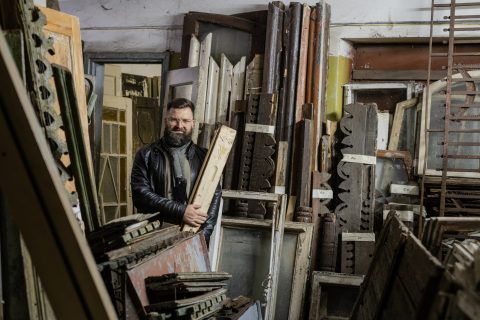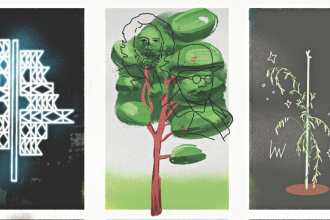“I don’t hang my own paintings at home, the walls are covered in my friends’ works,” Bangutis Prapuolenis says as I look at his watercolors in his painting studio. Many of them are placed on the table, in the corners, and against the wall. We move on to the restoration workshop. There is a large table, various tools, a small stove, and a round teapot waiting to be worked on – what a cozy place to spend the long, dark winter evenings! The threshold separating the two rooms is not only physical, but also symbolic: in spring and summer, Bangutis paints, and in autumn, as winter rolls in, he restores furniture until spring.
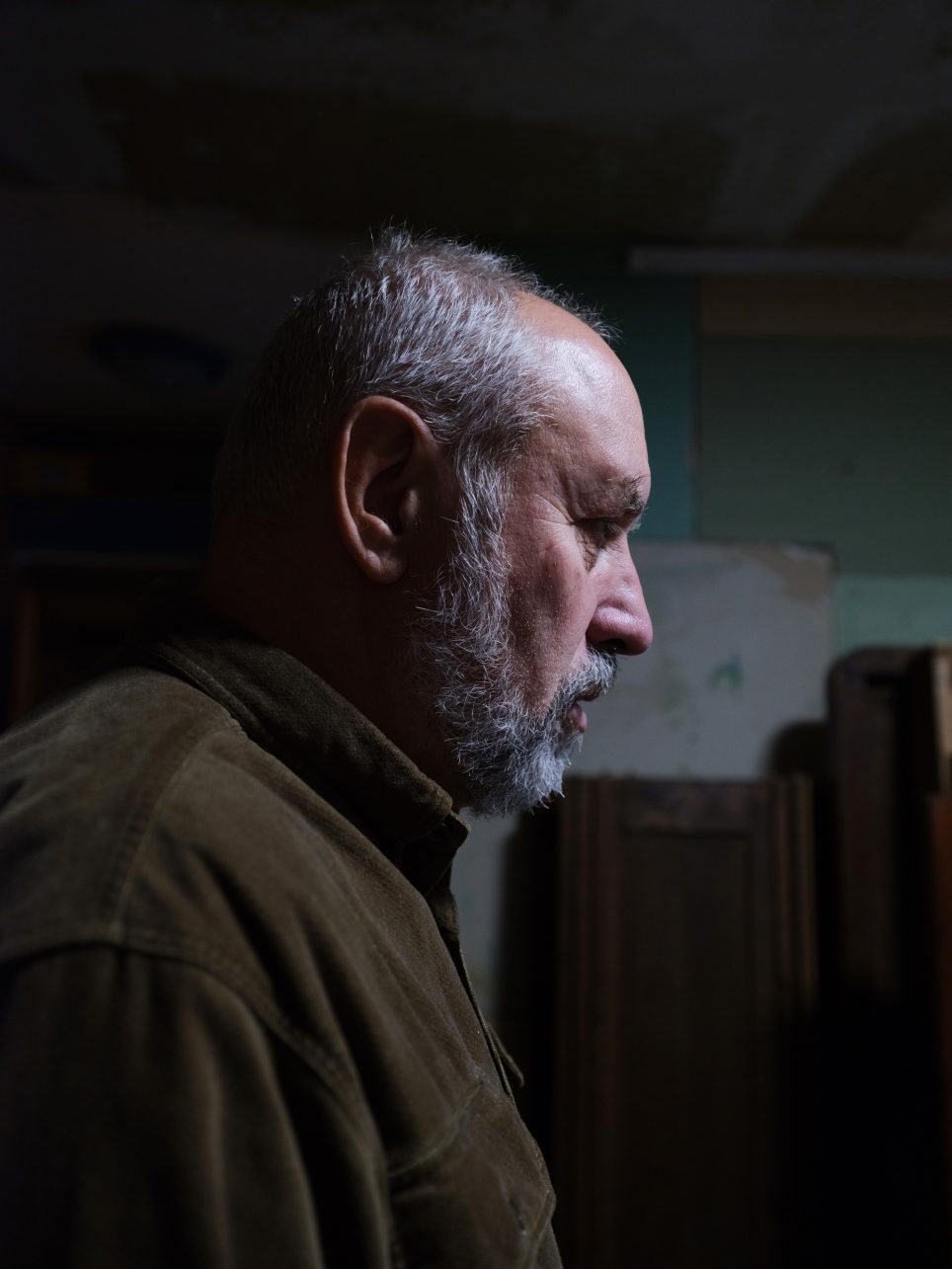
“Restoration requires a lot of meticulousness and patience but in painting, you can go crazy. Like now, I am going to the last plein air, I go wild, then return and go back to furniture.” I’m glad we met to talk about restoration in a time of transition when the subject is missed and anticipated. Bangutis Prapuolenis is a restorer of artistic furniture, an expert in artistic woodworking, head of the Art and Interior Restoration (artistic furniture and metal restoration) study program committee, associate professor at the Telšiai faculty of the Vilnius Academy of Arts, member of the Lithuanian Artists’ Association and the Association of Restorers. He is also the son of wooden furniture maker Jonas Prapuolenis and the owner of the original works.
We met for a chat at the restorer’s house. Life in the Garden of Eden, I thought, as I walked through the bird-adorned gate and was greeted by a flock of quacking ducks. We sat down for a chat in a still green garden, on chairs and by a table designed by Jonas Prapuolenis himself. Was it really just five minutes ago that I was at the busy intersection of Kaunas Clinics? Only the roar of the trolleybuses in the distance reminded me of the city. The plot is surrounded by old picturesque fruit trees, lush plants, and ducks splashing in a small pond, but the most attention-grabbing object is the old workshop of Jonas Prapuolenis, built back in 1936. Bangutis lives in another house, built in 1925, where the restorer’s workshop is also located.

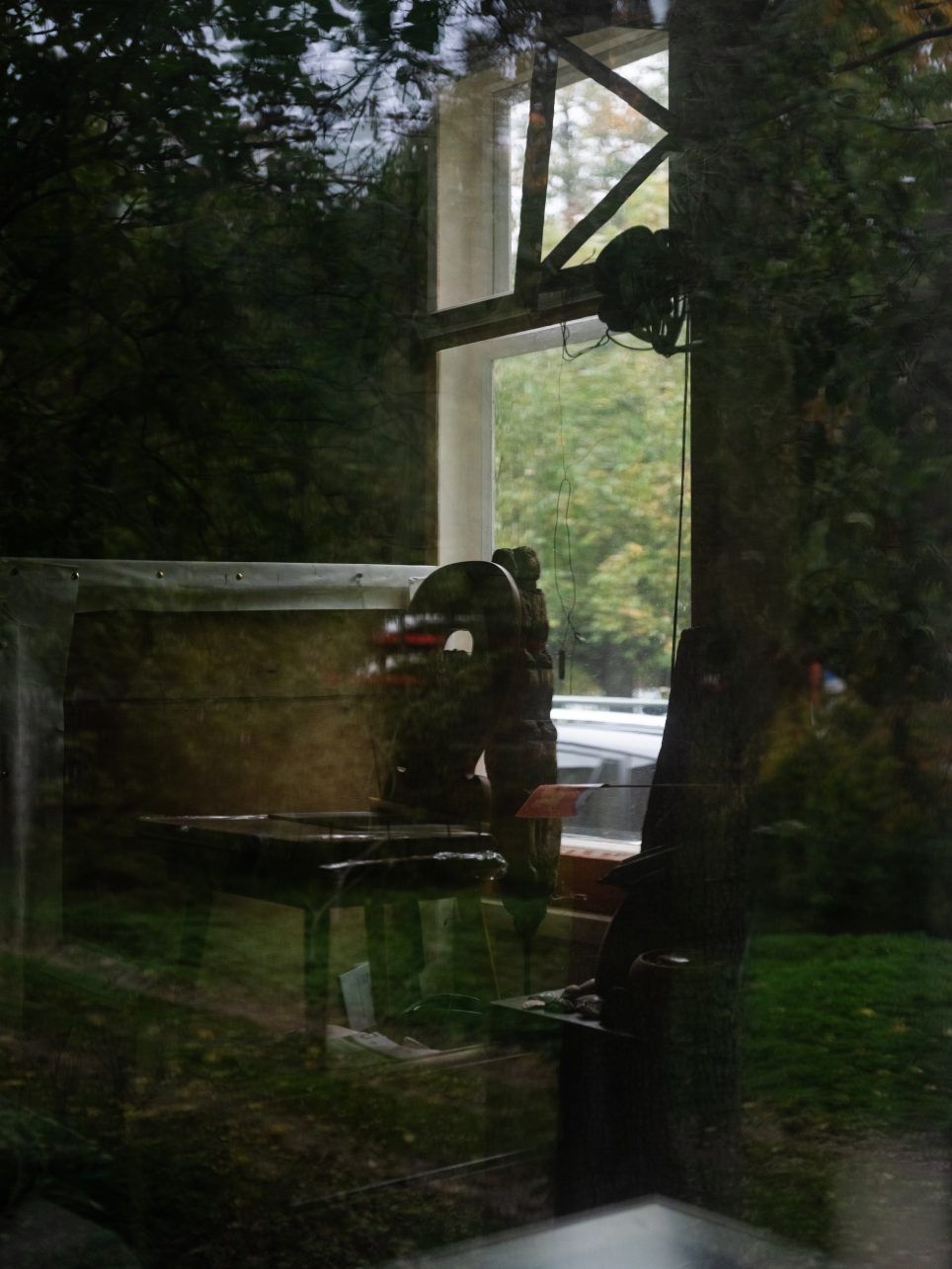
The man says that he did not choose restauration, it came to him. Wood has always been close to his heart: he made furniture in his youth and later chose to study artistic woodworking at the Stepas Žukas Technical School of Applied Arts, as it was called at the time.
“I really didn’t like it at school, and only when I went to the technical school, did I see a completely different environment, direct communication, and felt creative freedom. Entering Stepas Žukas Technical School was an attempt to get acquainted with artistic woodworking. It was a very good environment to grow and experiment,” Bangutis says. While studying, he did some extra work, carving missing parts for old furniture, and after graduating, he was assigned to work for three years in a Kaunas restoration workshop. Later he studied architecture at the Vilnius Academy of Arts, but in Kaunas he returned to what he was most drawn to – wood – and became a lecturer in artistic woodworking. Bangutis says he has always loved the original material and the warmth it radiates. Soon enough, a colleague, painting restorer Marija Rastenienė, invited Bangutis to teach her students woodwork. “It was a very successful collaboration and eventually a whole new subject was born – furniture restoration, for which I created a curriculum and started to train students. Knowledge got accumulated through internships, teaching, and practical work.” Currently, the man teaches restoration at the Telšiai faculty of the Vilnius Academy of Arts and has spent thirty-three years at Kaunas College. How have the generations of students and the lecturer himself changed? “The students are still the same: motivated and creative. If you communicate openly with them and pass on your knowledge and energy, they light you up, you see that they need this knowledge. It is like an exchange. It is really fun to work with them and helps one to stay young.” The restorer is more modest about himself but emphasizes that his work as a restorer, teaching in this field, is an incentive to constantly learn, change, and improve.
As I listen to the stories, I wonder how much of my choice of study was influenced by the Prapuolenis family line. After all, Bangutis’ father, Jonas Prapuolenis, is one of the most famous furniture makers in Lithuania. Bangutis used to see his dad concentrating in his workshop. Father didn’t like it when people disturbed him, so he used to give Bangutis a piece of wood to carve. However, the father didn’t impose it, the choice came naturally. Needless to say, Bangutis also became the owner of his father’s collection.
He says that the idea of the J. Prapuolenis museum has been on his mind for a long time, and the impetus to act came from the recent publication of a book Jonas Prapuolenis. A Study (Jonas Prapuolenis. Studija) by Kirvarpa publishing house.
“This is a very unusual book; Rasa Juškevičiūtė’s artistic photos capture the studio and homestead exactly as they are. Unembellished. It feels like the master was just here, only stepping away briefly, but is about to return and continue the work he started. The book moved me, too. My biggest wish is to keep the collection together in one place and set up a museum. I am slowly building it in the holiday home built by my father and the ground floor of the main house. It would offer a full exhibition with constantly changing furniture. I very much hope to be able to start the tours soon. In the former workshop of Prapuolenis, nothing has been moved; everything remains as the master left it: chisels, lathes, tools. I want to keep my father’s workshop as a historical object and preserve it, but not restore it.”
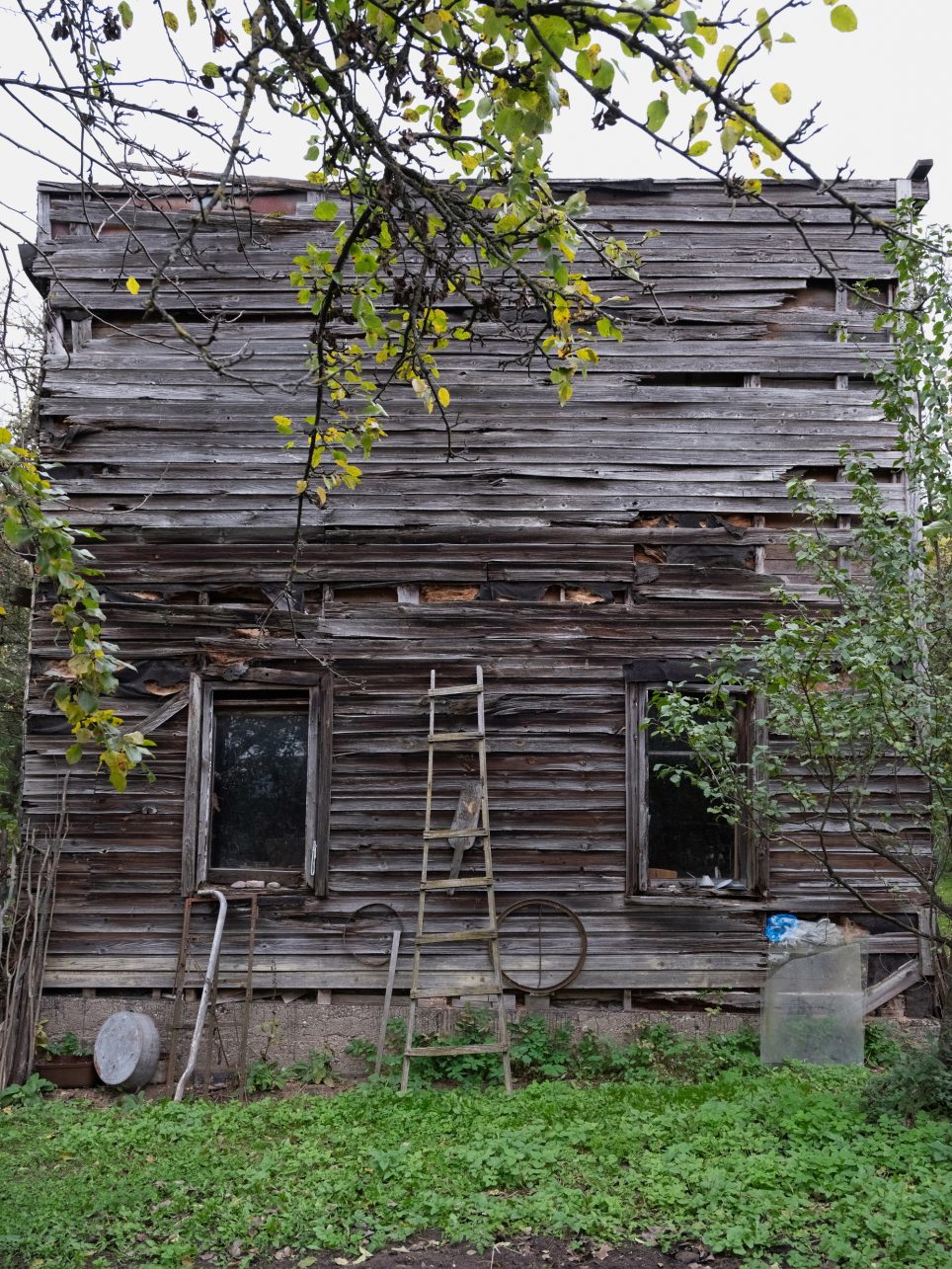
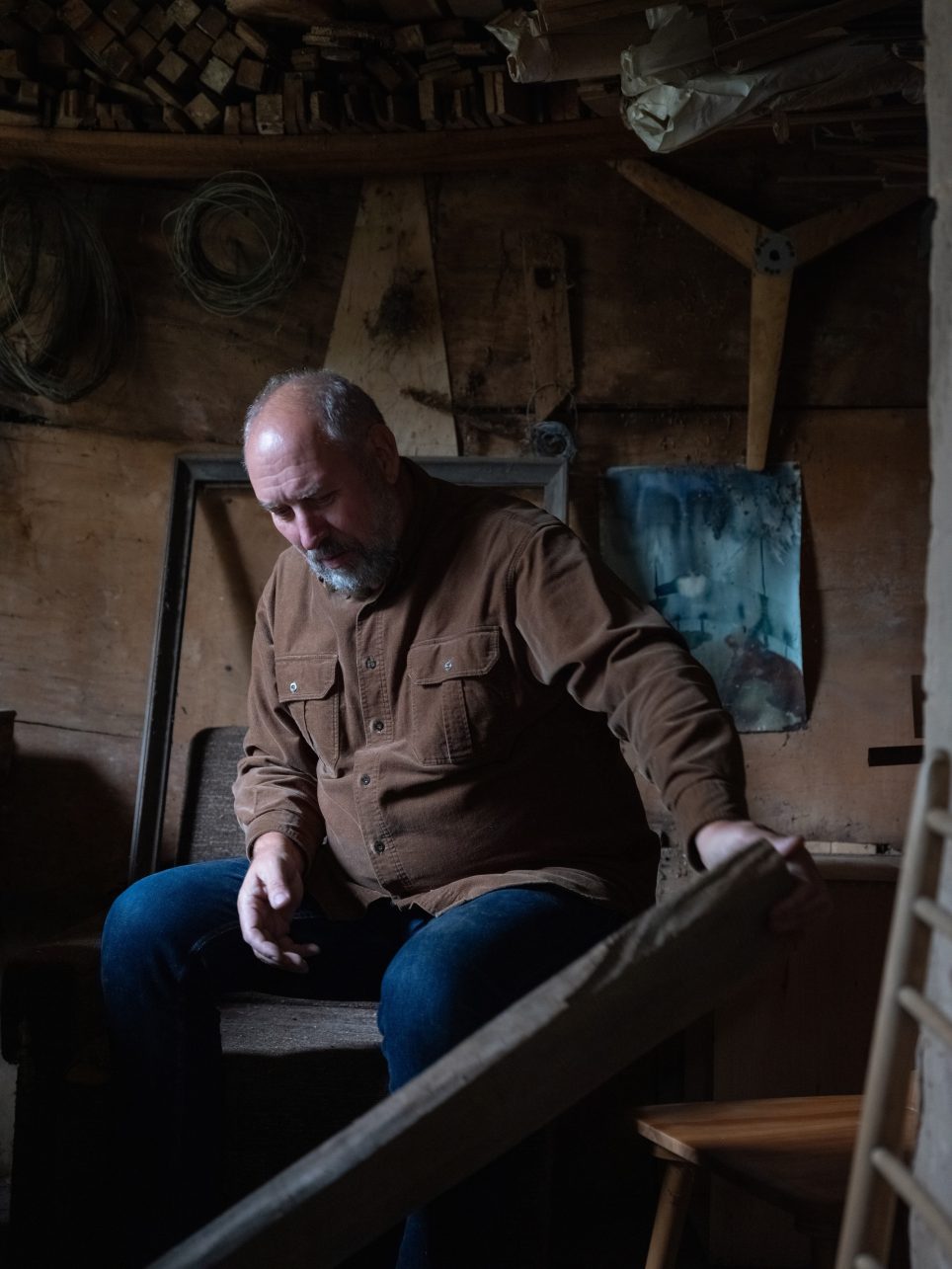
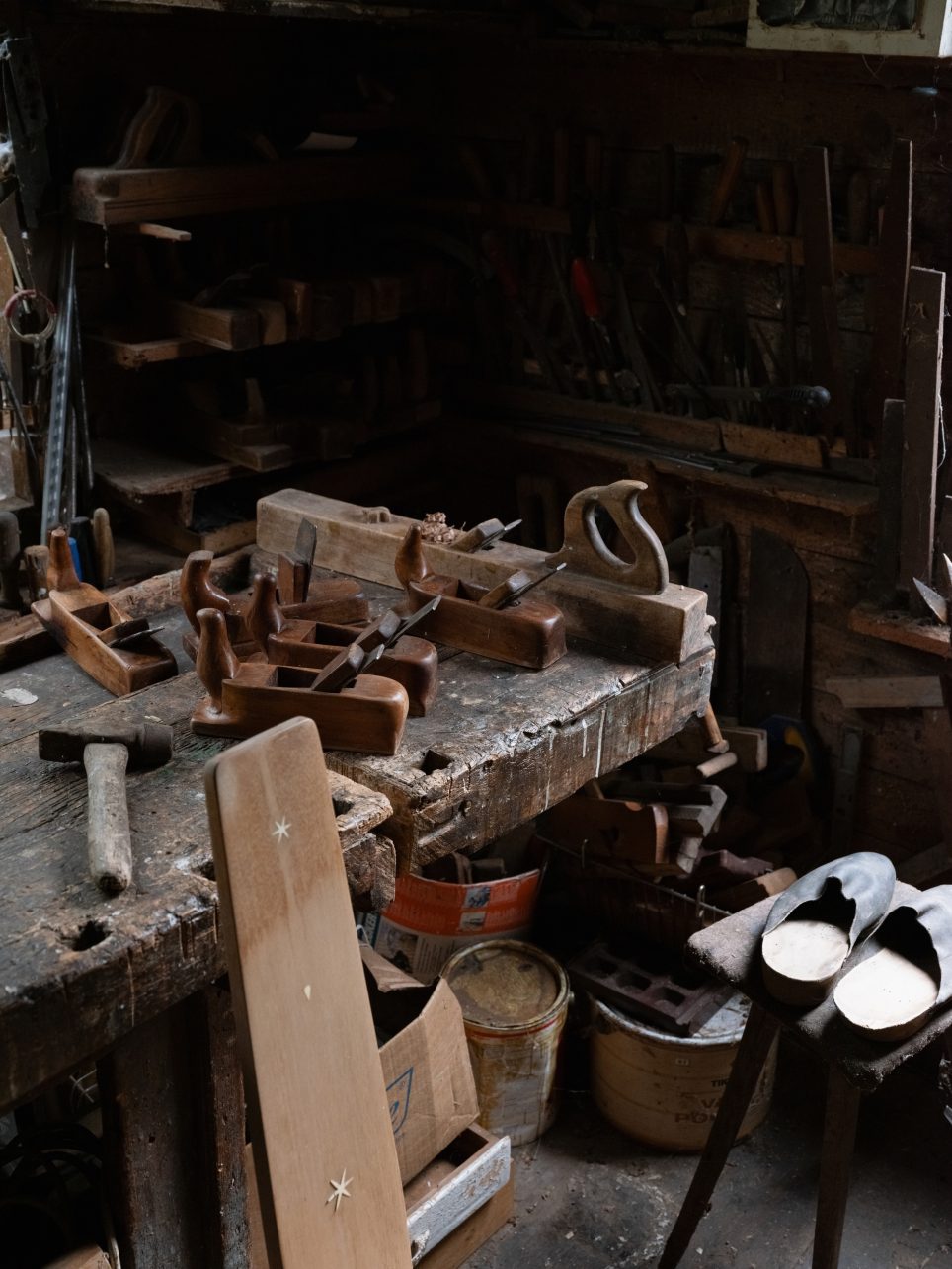
Indeed, everything in the workshop is reminiscent of Jonas Prapuolensis – through a small window we can see the same garden that surrounded the workshop during the interwar period, the same lathe and small stove that warmed the space on cold days, even the same logs remained, and there’s a furrow in the floor, made by the master, who constantly paced between the lathe and the workbench. This workshop is one of the most authentic historic sites I have ever visited.
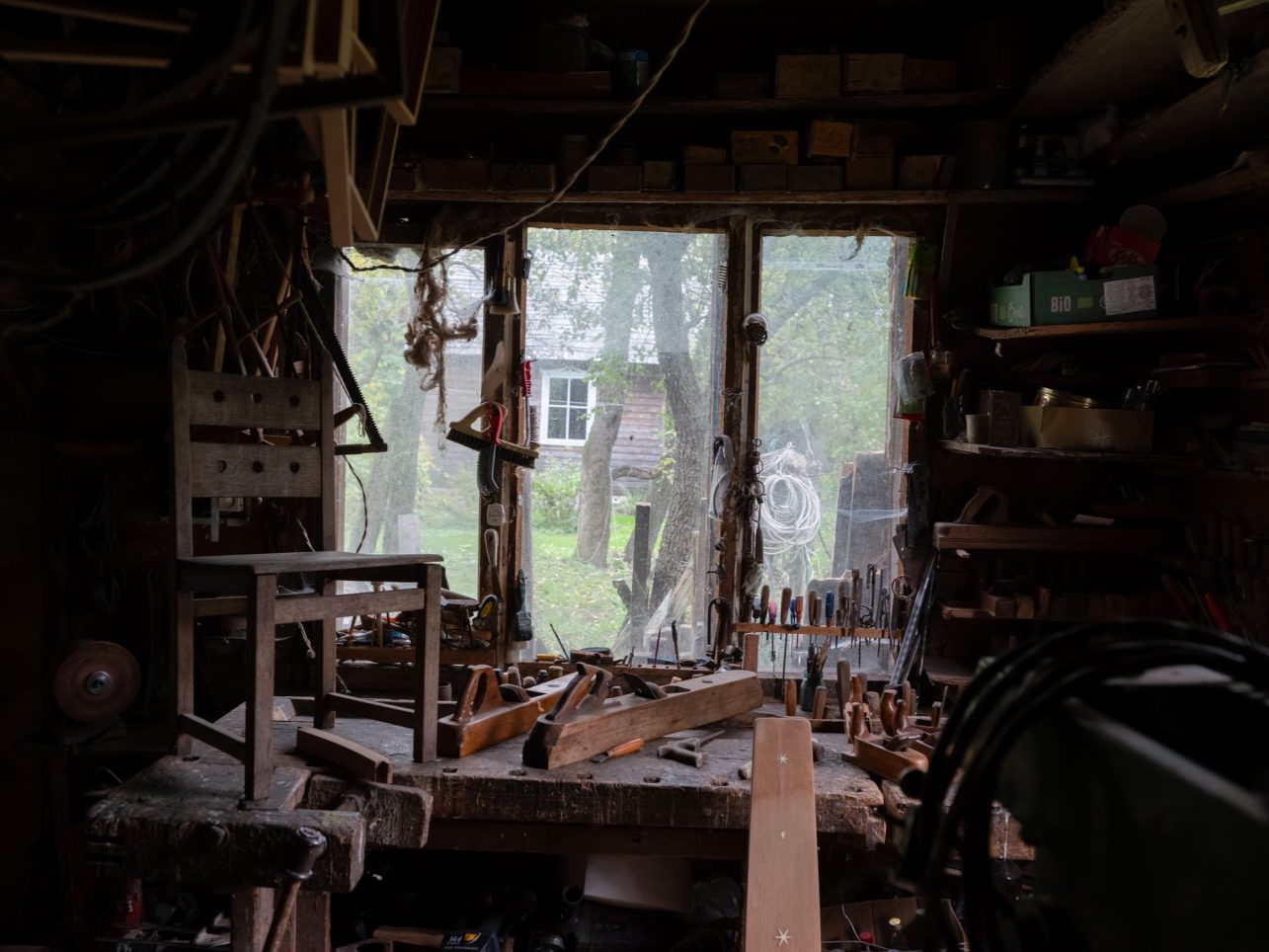
After returning from a short tour of the workshop, I asked Bangutis about the stories the furniture tells, and they are, apparently, varied and eloquent. “A piece of furniture is unknown at first, but step by step it begins to tell its story. It is the craftsman who created it, the warmth of his hands, the tools used, and the marks left by them, and then the former owners, their habits, the marks left by their use. You feel like a real investigator, maybe even a sleuth, a detective. A real craftsman, upon touching the timber, senses its language. You don’t even need to look; it’s enough to run your hand over it. Different types of wood evoke different moods and emotions. That’s why selecting the right timber for its intended use is important. “At one point, I worked with oak for a long time, and I felt its strong energy, which started to become too intense, too active. After a while, I couldn’t work with this wood anymore.” And which type of wood is the most temperamental? Bangutis mentions that the apple tree and other fruit trees are hard and difficult to carve, but they are fun to work with. There’s also Karelian birch, rugged birch, and maple where the wood structure is intertwined, which makes it difficult to process.
One of the oldest and most interesting projects Bangutis worked on was the restoration of the altars in St. George the Martyr Church in Kaunas; the altars were made in the 18th century. The restorer recreated wooden parts of the altars, the frames of paintings, and carved missing details. The man also remembers this project because he worked in a large team where each person was responsible for their own area, as is typical among restorers. If there are leather parts on a piece of furniture, certified leather restorers handle them, textiles are handled by textile restorers, and so on. Another memorable project for him was a massive Empire-style wardrobe commissioned by a private client. He was impressed not only by the age and technological precision of this piece (all boards were cut and assembled by hand, with visible tool marks) but also by the client’s attitude. “The conditions for restoration are not dictated by the client; I decide myself how best to restore the piece. Back then, I also explained the plan, pointed out the damage, and described how I would fix it. Upon hearing this, the client clutched his head, pleading with me not to change anything – he thought I would erase the marks of time, scratches, and fingerprints, though I very much wanted to preserve them myself; it was a simple miscommunication. It was wonderful to encounter such an attitude, where the goal is to preserve the layers that have accumulated over the years.”
That’s when I decided to ask about each artisan’s contribution: is restoration an objective or subjective process? Bangutis firmly asserts that it is objective: everything is clearly defined and structured in the discipline. There’s no room for creativity or interpretation here. But then what about the debate on the restoration, determining the value and (not) leaving the marks? The principles of restoration are clearly defined, but there can be different approaches to achieving the result. We assess what type of object it is and its value. Like all restorers, my first instinct is to dive right into the work, but you have to pause, connect with, and understand the object to determine what needs to be done. It’s essential to create a restoration work plan, conduct research, to assess the most valuable layers and a wide range of other things, for example, whether it will be used as a household item, displayed in a museum as an exhibit, or perhaps as a part of a house museum. In the latter case, even the ink stains on the table or the marks from a hot cup left by a famous person are important. Determining the value of an object is a complex matter, and sometimes, when one person cannot take on this responsibility, restoration councils and commissions are convened, and a joint decision is taken.” Bangutis also adds that missing parts are not restored during restoration if no analogs can be found.
I remembered my first (and last) furniture restoration project when I took an old stool, covered it in white paint, and painted some flowers. The dirt on the chair that I was too lazy to remove was hidden as one layer under the paint and varnish. I suppose now I’d be more skilled at asking, “What shouldn’t be done?” So, I asked Bangutis what advice he’d give to those who want to restore furniture. The restorer was pleased to see fewer cases of furniture being damaged due to ignorance. “First and foremost, seek advice from a specialist. It could be that the furniture is perfectly fine and only needs dusting, with no serious repairs or restoration needed, as signs of aging often add beauty. If you want to play or practice, then it’s best to do it with furniture that has no value.”
It’s getting dark outside, and after saying goodbye to Bangutis, I go back to the fence with the birds, away from the oasis to the bustle of the city. I think about how a city where you seem to have seen it all can surprise you. How much talent and a lifelong willingness to learn can be contained in one person? How many layers can we find in timber, furniture, and lives, and how many more stories we can read when we learn to see not only with our eyes but also with our hands?


